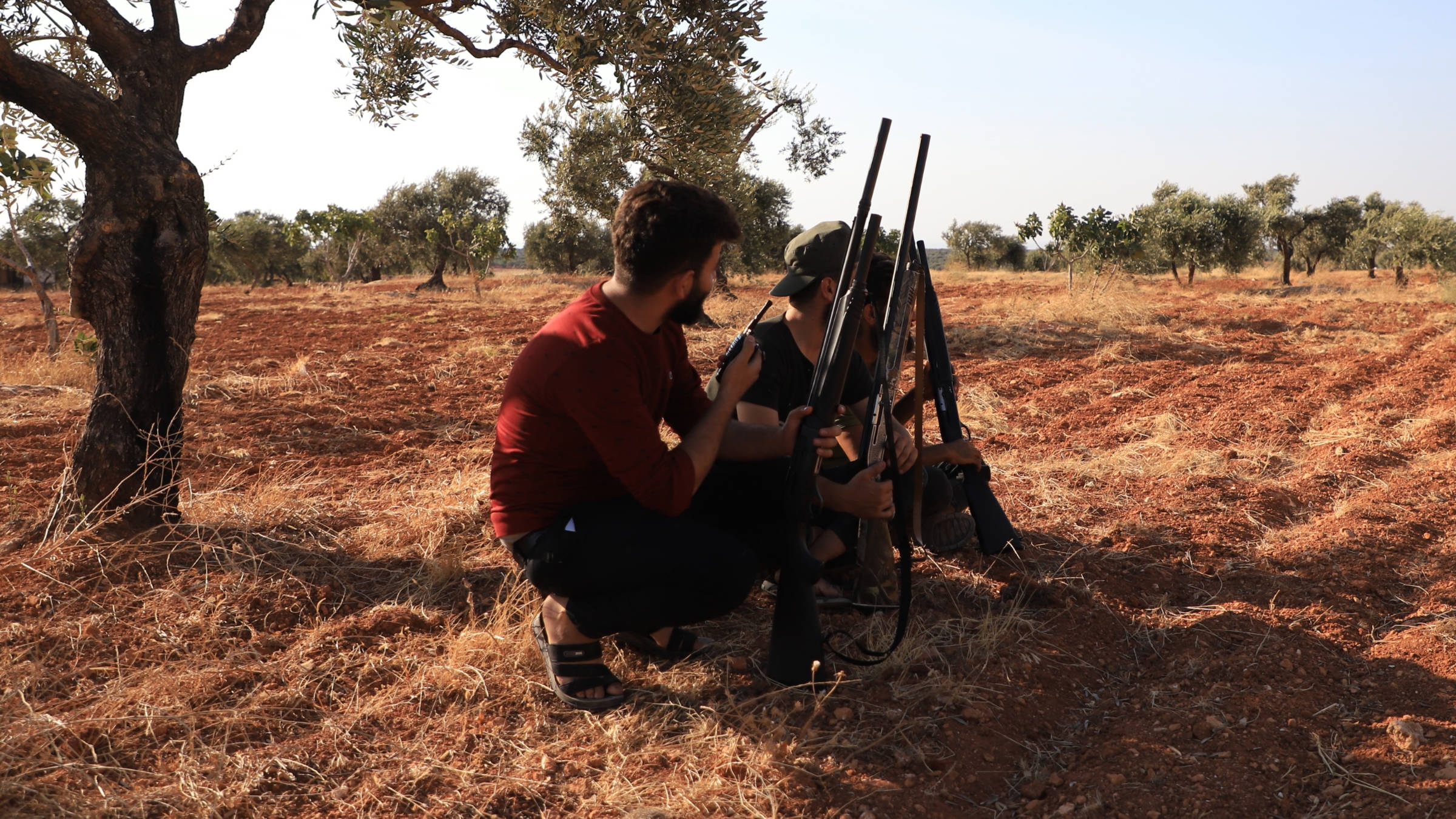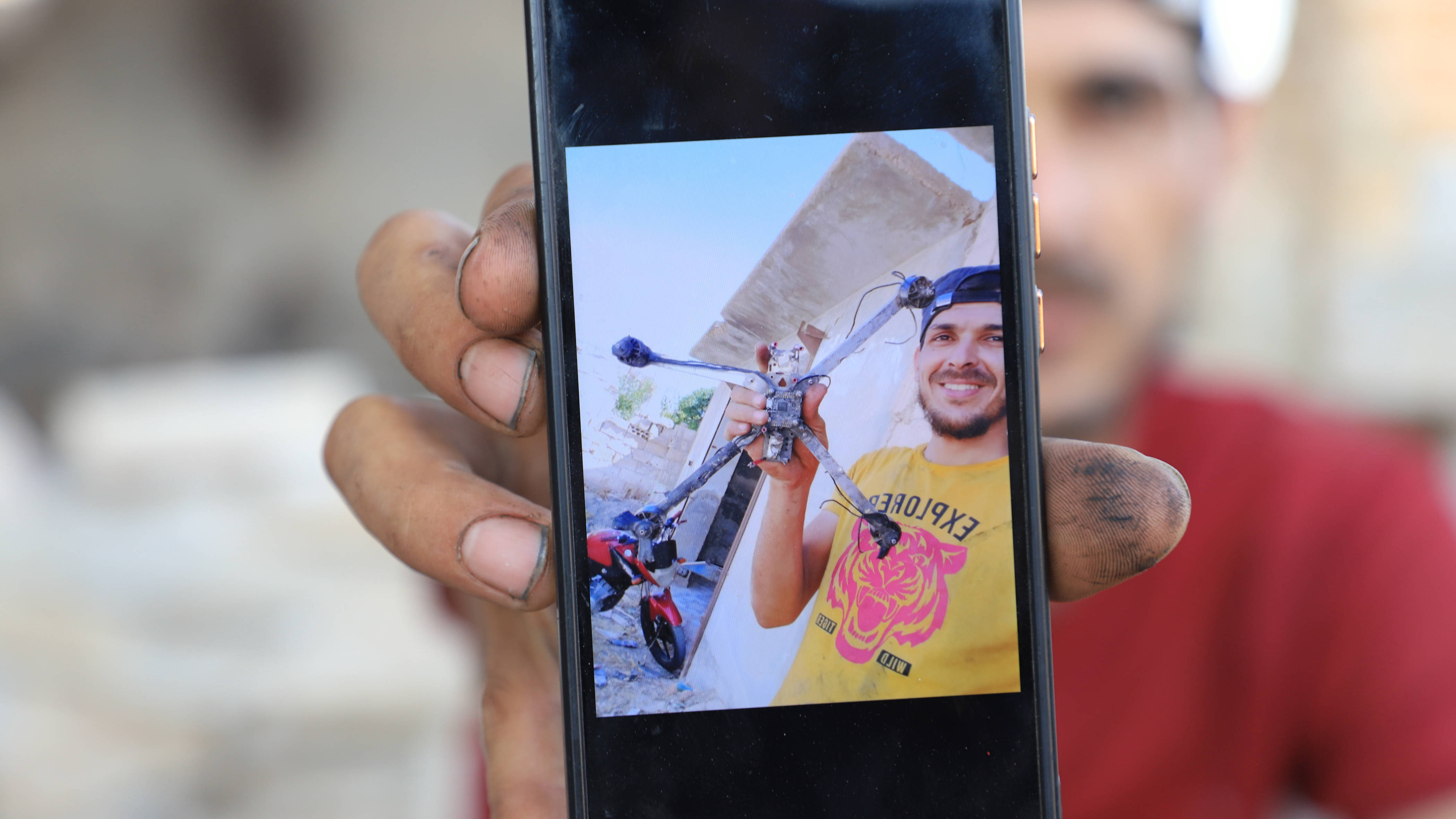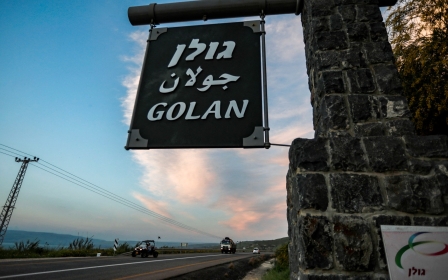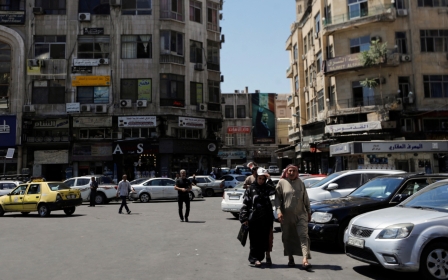Syrian villagers take up rifles to shoot down explosive-laden drones

In al-Nayrab village in northwestern Syria, a group of men set out early every morning, around 4am, with their hunting rifles to monitor the sky for explosive-laden drones that have menaced the villagers for almost a year now.
“We used to use these rifles to hunt rabbits and birds, as well as to protect our houses and properties from stray dogs,” said Abdul-Rahman al-Mohammed, a 29-year-old resident of al-Nayrab, which sits on the front line between government militias and opposition forces.
“But now, we use them to protect our properties from drones.”
Since late 2023, the Syrian government has introduced armed drones to the battle in northwestern Syria. Over the past year, drone attacks have repeatedly struck both military and civilian targets, including farmers working the land, according to the Syrian Observatory for Human Rights.
In the early morning of 9 July, when seven drones attacked al-Nayrab, in Idlib’s eastern countryside, destroying several civilian cars, villagers picked up their rifles and managed to shoot down two of them.
New MEE newsletter: Jerusalem Dispatch
Sign up to get the latest insights and analysis on Israel-Palestine, alongside Turkey Unpacked and other MEE newsletters
In the first four months of this year, 60 suicide drone attacks were reported across 21 villages, many of which are located in al-Ghab Plain in the Hama countryside and in the Idlib countryside.
At least 11 people were killed and 32 were wounded in the attacks, according to the Syrian Civil Defence, also known as the White Helmets.
“This has been a dangerous escalation,” Hasan al-Hasan, a senior member of the White Helmets, explained.
“Many single attacks are being carried out simultaneously by two to six drones. They have targeted moving vehicles, including ambulances, emergency or civilian cars and even motorcycles.
“There’s no particular reason for this type of attack in these regions.”
Hasan added that drone attacks, which have been mainly concentrated in the areas close to the front line, are putting around 70,000 people in danger, including 22,000 refugees, in the targeted villages.
Al-Mohammed said the government’s objective behind the drone campaign is to force residents to leave the opposition-held region before it invades it.
The source of these drones has not been confirmed, however, some observers believe that they are locally manufactured.
“These are commercial drones that can be easily fitted with explosives, are precise and easy to use,” said Hasan.
'Unbearable impact'
The campaign has wreaked havoc on the livelihoods of people living in targeted areas.
Residents have reported the destruction of their sources of living, especially in agricultural regions, where drones have destroyed or damaged main roads, farms, homes, a local market, and shops.
The Syrian Civil Defence has documented its response to 14 attacks in February, 17 attacks in March and 13 attacks in April this year.
“A few weeks ago, a group of drones attacked al-Nayrab and one of them targeted my car, a 1997 pick-up truck I use for farming, leaving it mostly damaged,” said Hussein al-Ali, known as Abu Nizar, a refugee from Saraqib.
The attack cost Abu Nizar $600, a price that is too heavy to bear.
“I had that car to help me work. The severity of the financial situation we are enduring makes any loss we encounter extremely tough and unbearable,” he said.
“After the drone struck my car, I shot it down and destroyed it.”
Middle East Eye delivers independent and unrivalled coverage and analysis of the Middle East, North Africa and beyond. To learn more about republishing this content and the associated fees, please fill out this form. More about MEE can be found here.





